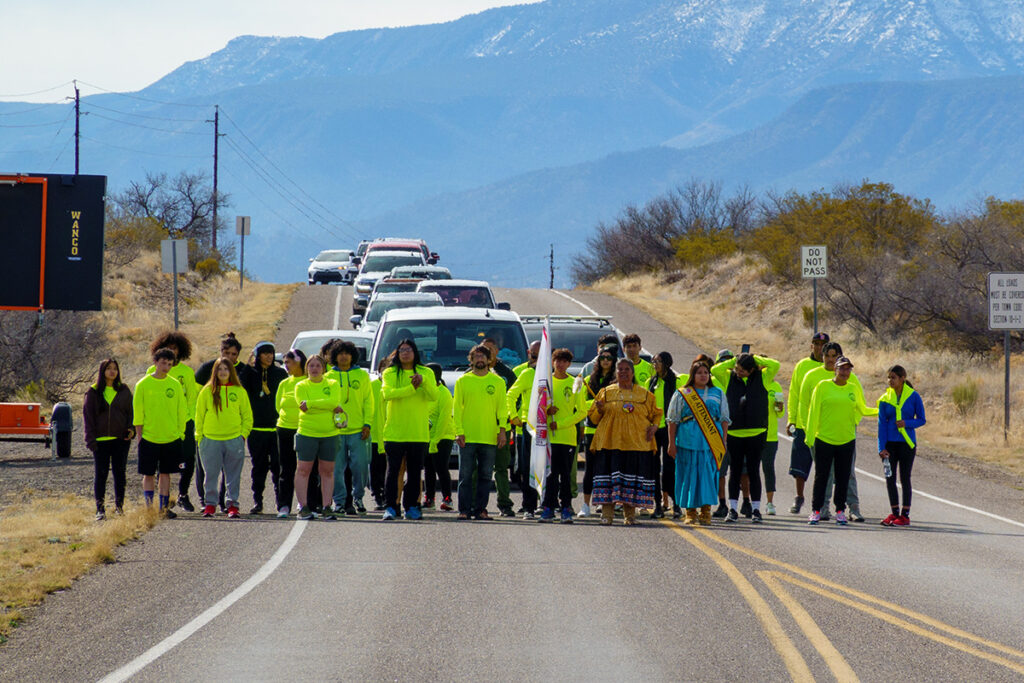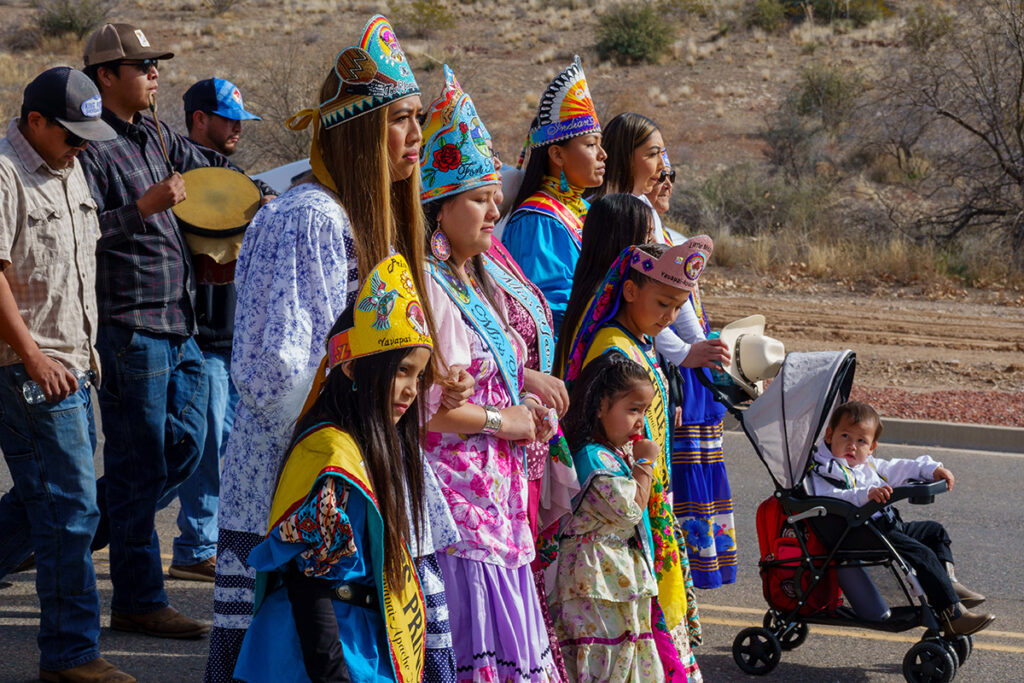The Yavapai-Apache Nation commemorated Exodus Day on Saturday, Feb. 24, to remember the return of the Yavapai and Apache peoples who had been displaced from their ancestral lands and forced to march 180 miles to San Carlos Reservation by the U.S. government.
The event featured a variety of food, vendors, cultural performances and the commemorative San Carlos Exodus Run, which started at 2 a.m. Participants ran in a relay format from San Carlos to the Nation’s Veterans Memorial Park to remember the march the Yavapai and Apache people were forced to take in 1875.

The Yuman-speaking Yavapai and the Athabaskan-speaking Apache originally occupied adjoining regions. The Yavapai lived from the Verde Valley westward to the desert bordering the Colorado River while the Tonto Apache lived east of the Verde Valley toward the White Mountains. Members of both tribes ranged as far south as the Phoenix Basin and as far north as the Grand Canyon.
American settlers began to encroach significantly on Yavapai and Apache territories around 1860, with hostilities between locals and miners breaking out in 1863.
In 1871, the U.S. government created the Rio Verde Reservation by executive order, which included around 900 square miles from Camp Verde to Paulden. Gen. George Crook relocated the Yavapai and Apache peoples there in 1872, promising that if they stayed on the reservation and were well-behaved they could go back to the Verde Valley.

The Rio Verde reservation was abolished by executive order in 1875 and both tribes were forced to march 180 miles to San Carlos in February under harsh winter conditions. The U.S. Army marched between the Apache and Yavapai groups, as food was scarce and fights broke out. It is estimated that 1,500 Yavapai and Apache were removed and at least 100 died.
When the Yavapai and Apache were finally granted permission to leave in 1900 after a quarter of a century, only about 200 of them made it back to the Verde Valley. Many found that their lands had been settled by white ranchers and farmers, and by 1905, much of the remaining land was placed under the control of the U.S. Forest Service.
The Nation holds this commemorative event each year, known as Exodus Day, to remember those who were forced to leave their homelands.
The Yavapai-Apache Nation is recognized as an amalgamation of these two distinct cultures as a result of the Indian Reorganization Act passed by Congress in 1934. While now a single political entity, the nation continues to recognize its dual heritage.



